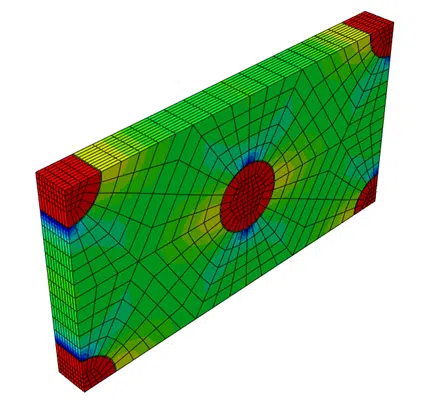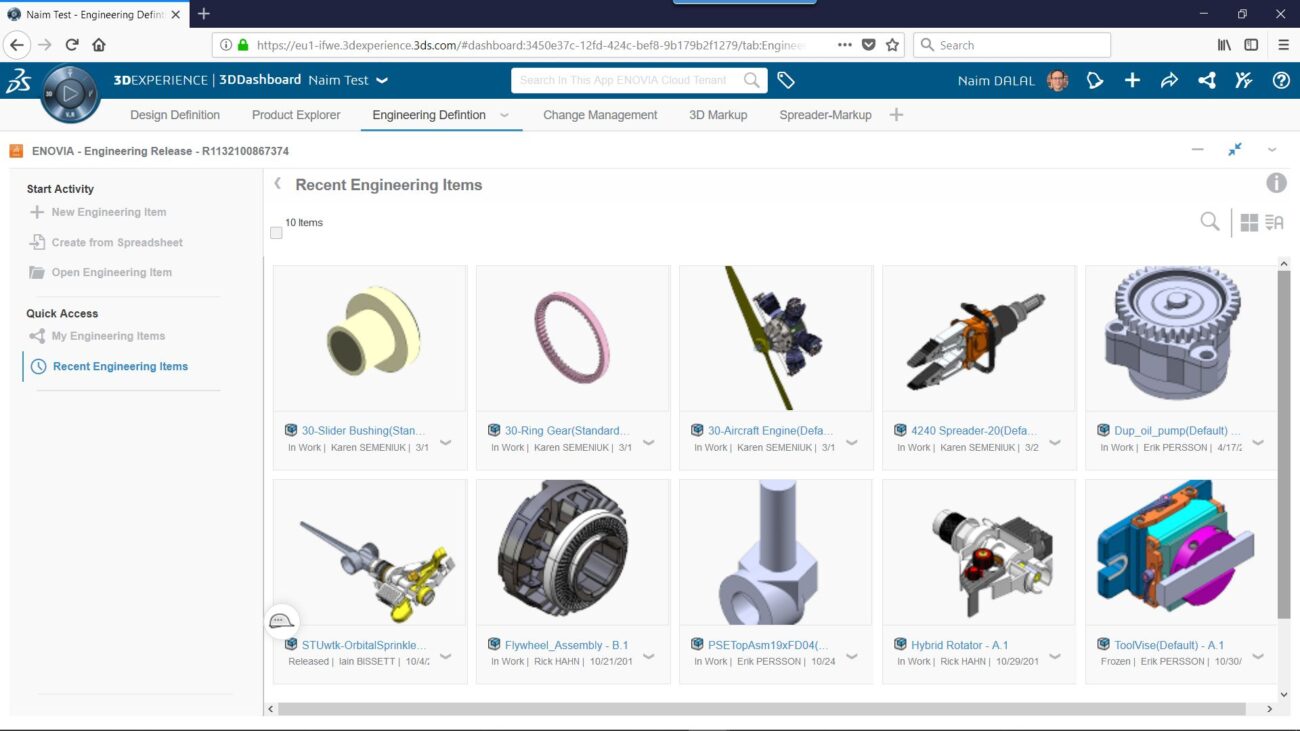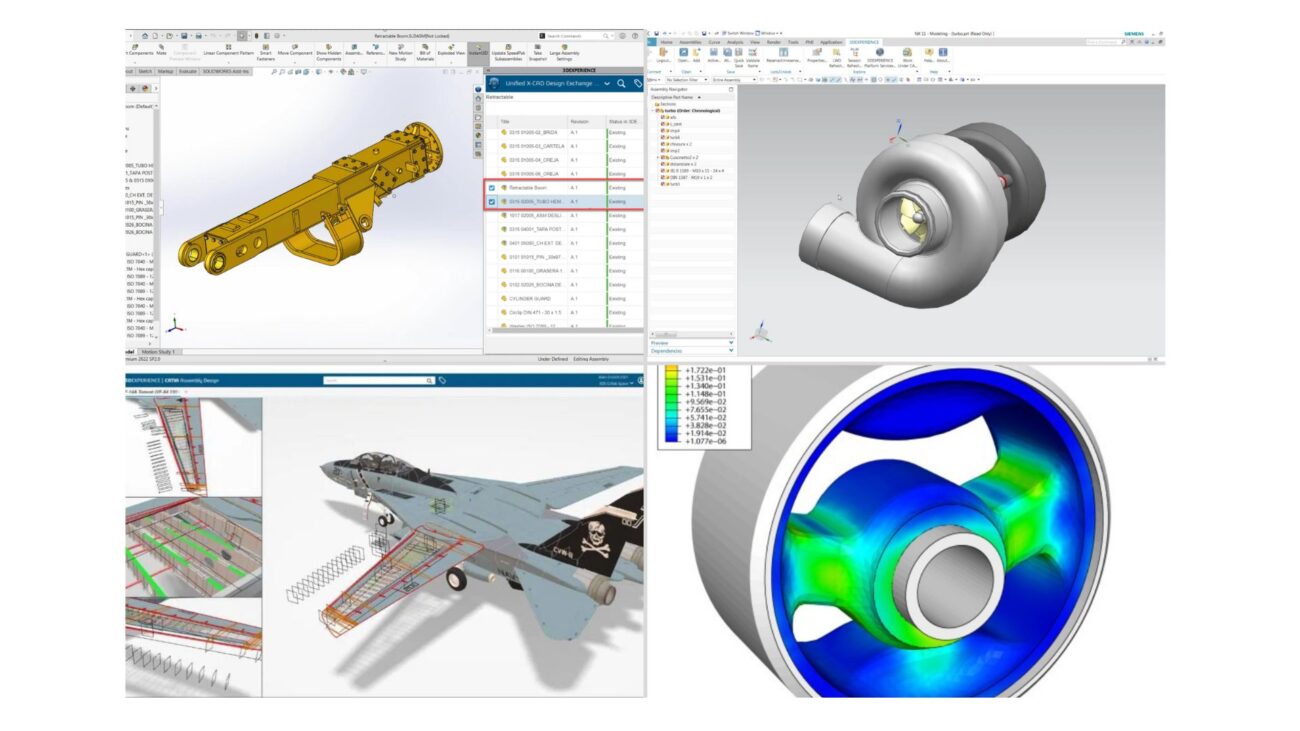The homogenization method has served for many years in prediction of the effective physical properties of multiphase materials. These properties include mechanical, electrical, or thermal which are then used in macroanalysis of structural elements or the entire composite assemblies for various purposes and numerous industrial applications. [1] One of these industries is a medical industry, where the prediction of the mechanical properties of a cancellous and cortical bones has been an active research area for many years. For the mechanical modeling of cancellous and cortical bones, the homogenization techniques became the effective method in extracting the mechanical properties. Most of the homogenization strategies make use of the application of the representative volume element (RVE) for simulating the effective material behavior. [2]
The Micromechanics RVE plugin in Abaqus/CAE can provide a powerful functionality for simulating the material behavior of the cancellous and cortical bones with distinct constituents and microstructures. The Micromechanics RVE plugin allows user to define the material as a combination of constituents to predict homogenized properties of the material. The example below provides insight as to how the Micromechanics RVE plugin is utilized to obtain a certain homogenized properties (e.g., elasticity and density) that can be used for larger scale material modeling.
Geometry
Before utilizing the Micromechanics RVE plugin several sizes of cubic samples are selected along the M-L (medial-lateral) and A-P (anterior-posterior) directions of cancellous and cortical bone and then compared for porosity. When the adequate porosity of the sample size is found, the cubes are then imported to Abaqus for RVE analysis. Note that the bone geometry represented through a cubic volume is reconstructed in Simpleware software (ScanIP) using images from a µCT scan of the bone sample image.
| Figure 1: RVE Example |
RVE Methodology
The RVE is designed to capture effective structural and material properties at a microscale level. The RVE approach performs statistical averaging of the microstructural features within the given cubic volume by applying loading from six independent directions. The loading and boundary conditions in this job are such that homogenized material properties can be calculated from the results. Elastic properties and densities are selected as homogenization output.
 |
| Figure 2: Micromechanics Plugin Inputs |
Once the analysis is completed, the results can be post processed to obtain homogenized properties of the bone. The predicted local RVE mechanical properties are then averaged and transferred as input parameters for the macroscale simulation analysis of the entire bone.
 |
| Figure 3: Micromechanics Plugin Outputs |
Conclusion
The Micromechanics RVE plugin is a great tool in predicting homogenized properties of material. This example demonstrated that Micromechanics RVE plugin can be used to obtain the homogenized properties of the bone structure. Initially, several sizes of cubic samples were selected from the bone scan for RVE analysis. Afterwards, homogenized mechanical properties were calculated based on the RVE samples in Abaqus/CAE. The mechanical properties are then transferred for the macrolevel model for further analysis. The aim of this example was to provide a framework using FEA and Micromechanics plugin methodology for a rapid and accurate multiscale modeling of bone.
If you want to have a better understanding on how to apply the RVE process for your product, please do not hesitate to contact us.
About VIAS3D
VIAS3D engineering and simulation team combines decades of analytical and design experience. They have successfully helped to design various products from many industries for strength, stability, rigidity, and fatigue endurance. Our design and analysis capabilities are accomplished through advanced engineering modeling techniques such as Finite Element Analysis (FEA) using Abaqus, Computational Fluid Dynamics (CFD), and other tools.
Using these advanced tools, we can capture complex design features and nonlinearities arising from materials, geometry, and surface interactions to simulate designs and predict their response before they are brought in production.
Please email us at achakraborty@viascorp.com or drop a message at: https://www.linkedin.com/in/arinc16/
Contributors:
Georgiy Makedonov, M.S., is an FEA Engineer at VIAS3D. has over 4 years of industrial experience in finite element analysis simulation, technical support, and consulting. His professional interest involves designing, developing, and evaluation of rigid pipeline systems, teaching, and FEA analysis using Simulia Abaqus. He holds Master of Science in Mechanical and Subsea Engineering from University of Houston.
References:[1] Klinge S. Determination of the geometry of the RVE for cancellous bone by using the effective complex shear modulus. Biomech Model Mechanobiol. 2013 Apr;12(2):401-12. doi: 10.1007/s10237-012-0408-5. Epub 2012 Jun 15. PMID: 22699522. [2] Willems, Nop & Langenbach, Geerling & Everts, Vincent & Zentner, Andrej. (2013). The microstructural and biomechanical development of the condylar bone: A review. European journal of orthodontics. 36. 10.1093/ejo/cjt093.




